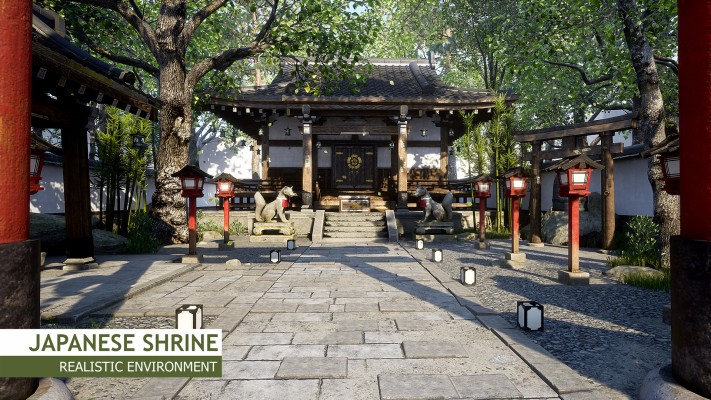
In the heart of Japan’s lush landscapes, Shinto shrines stand as timeless sanctuaries, inviting both reverence and curiosity. These sacred spaces are deeply intertwined with the spirituality of the Shinto religion, which honors the kami, or divine spirits, believed to inhabit all elements of nature. With their stunning architecture, intricate details, and serene surroundings, Shinto shrines offer a glimpse into the rich cultural heritage of Japan, celebrating the harmony between humanity and the natural world.
As we explore these enchanting sites, we uncover a realm of practices and traditions that have been preserved through generations. Each shrine tells its own story, embodying the beliefs and rituals of the local community. Whether it’s the vibrant torii gates that mark the entrance to a sacred space or the peaceful gardens that invite reflection, the beauty of Shinto shrines resonates deeply, encouraging visitors to pause and listen to the whispers of the kami that linger in the air.
Historical Significance of Shinto Shrines
Shinto shrines have been integral to Japanese culture and spirituality for centuries, serving as the primary sites of worship for the Shinto faith. These sacred spaces are dedicated to kami, the divine spirits that Shinto practitioners believe inhabit everything around them, from natural elements to ancestors. The historical roots of these shrines can be traced back to ancient Japan, where natural features such as mountains, rivers, and trees were revered as dwelling places of kami. Over time, these sites evolved into formalized structures, becoming focal points for community gatherings, rituals, and festivals that celebrate the changing seasons and the blessings of the kami.
As Japan underwent periods of political and social transformation, the role of Shinto shrines expanded. During the Nara and Heian periods, the establishment of prominent shrines, such as Ise Jingu and Fushimi Inari Taisha, contributed to the development of state Shinto, which intertwined religious practices with national identity. These shrines not only served as places of worship but also became symbols of the emperor’s divine status and the connection between the Japanese people and their gods. The architectural styles and practices that emerged during these centuries reflected an adaptation to changing cultural influences, while still maintaining the essence of Shinto beliefs.
The modern era has seen a resurgence of interest in Shinto shrines as people seek to reconnect with their heritage and spirituality. Although Japan experienced significant Western influence during the Meiji Restoration, the sanctity of Shinto shrines remained intact. Today, these sacred sites are not only maintained as places of worship but also as cultural landmarks that attract millions of visitors each year. They embody a historical continuum, representing Japan’s rich spiritual traditions and the enduring relationship between the kami and the Japanese people.
Architectural Features and Aesthetics
Shinto shrines exemplify a harmonious blend of simplicity and elegance, reflecting the philosophy of Shintoism, which emphasizes living in accordance with nature. The design typically features a wooden structure, often raised upon pillars, allowing for natural ventilation and minimizing the disruption to the surrounding environment. The use of natural materials such as wood and thatch creates a warm atmosphere, inviting visitors to connect with the spiritual essence of the kami.
One of the most recognizable elements of Shinto shrine architecture is the torii gate, which stands at the entrance and symbolizes the transition from the mundane to the sacred. This gate often displays a minimalist design, which enhances its spiritual significance. The main shrine building, known as the ashi quantum, is usually adorned with elegant, flowing lines and a thatched or wooden roof that often curves upward at the edges, echoing the shapes found in nature. Such design choices not only serve aesthetic purposes but also reinforce the spiritual connection to the natural world.
The placement of shrines within their natural surroundings is meticulously planned, with careful consideration given to the landscape and elements such as trees, water, and rocks. Many shrines are situated near forests or rivers, believed to be inhabited by kami. This integration with the natural environment fosters a sense of peace and tranquility, allowing visitors to experience the sacred beauty of these spaces and encouraging reflection on the interdependence between humanity and nature in Shinto belief.
Famous Shrine In Japan
Cultural Practices and Rituals
Shinto shrines are not merely places of worship; they are vibrant centers of cultural practices and community rituals that strengthen the bond between people and the kami. Visitors to these sacred spaces often engage in a variety of rites, such as purification rituals where they wash their hands and mouths at a temizuya. This act symbolizes the cleansing of both body and spirit, preparing oneself to approach the kami respectfully. Seasonal festivals, known as matsuri, are another vital aspect of shrine life, celebrating the gods and ensuring their blessings for the community.
During these matsuri, participants may don traditional attire and take part in lively processions that feature music, dance, and traditional arts. Each shrine often hosts its own unique events, which can vary based on the season or significant agricultural dates. The offerings made during these festivals, such as rice, sake, and flowers, are a way to express gratitude to the kami and reinforce the interconnectedness of nature and humanity. Such celebrations also provide opportunities for communities to come together, fostering a sense of belonging and shared purpose.
In addition to festivals, daily rituals hold great importance at Shinto shrines. Visitors can often witness the kuma or seijin no hi, ceremonies marking significant life events such as births, coming-of-age, and marriages. These rituals are imbued with deep spiritual significance and collective memory, reinforcing cultural identity and continuity. The careful choreography of these practices reflects the profound respect for the kami and the natural world, inviting all who come to participate in the sacred dialogue between the mundane and the divine.
Natural Harmony and Sacred Spaces
Shinto shrines are often situated in breathtaking natural settings that reflect the harmony between the built environment and the surrounding landscape. The choice of location is not arbitrary; these sites are deliberately selected for their inherent beauty and spiritual significance. Mountains, rivers, and ancient trees are transformed into sacred elements that enhance the overall experience of visiting a shrine. This relationship with nature is a fundamental aspect of Shinto, emphasizing reverence for the kami, or spirits, believed to inhabit these natural features.
Walking through a Shinto shrine, one cannot help but feel a sense of tranquility and connection to the earth. The pathways are lined with carefully placed stones, and the architecture complements the natural surroundings, creating a seamless blend of human-made beauty and the untouched landscape. The use of natural materials in shrine construction, such as wood and thatch, further reinforces this synthesis, allowing the buildings to weather naturally over time. This design philosophy invites visitors to pause, reflect, and appreciate the serene environment that holds deep cultural and spiritual significance.
As one moves deeper into the shrine grounds, the atmosphere shifts to one of contemplative peace, encouraging a mindful engagement with the sacred. Visitors often find themselves taking a moment to breathe in the fresh air, listen to the rustling leaves, or observe the gentle flow of nearby water. This intimate encounter with nature within the sacred spaces of Shinto shrines evokes a profound sense of belonging and connection to something greater than oneself. In this way, the shrines become not just places of worship, but also sanctuaries for the spirit and reminders of the beauty inherent in the world around us.
